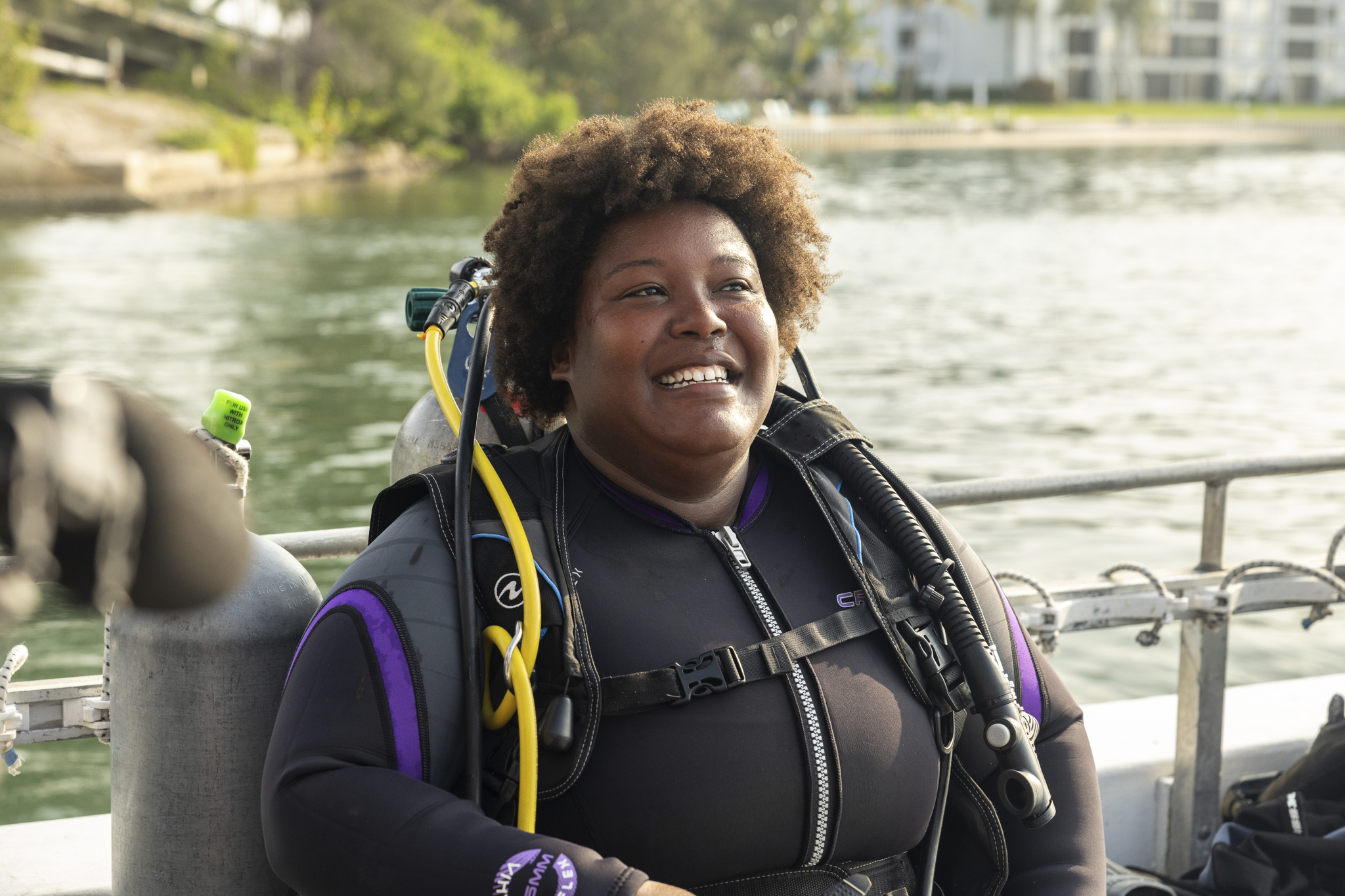This article is included in these additional categories:
Discovery Channel’s “Shark Week” premiered a highly anticipated episode, “Sharks of the Dead Zone,” hosted by the distinguished Environmental Ecologist Dr. Tiara Moore. The episode delves into the pressing issue of marine pollution and algal bloom outbreaks that are creating foreboding dead zones within North America’s most biodiverse estuary.
Dr. Moore, in collaboration with Dr. Craig O’Connell, investigates the ability of Bull Sharks to survive in the Indian River Lagoon, a crucial nursery habitat, amidst oxygen-depleted waters. This exploration aims to uncover insights into the resilience of shark species in the face of changing oceanic conditions.
Dr. Tiara Moore: A Champion for Marine Science and Diversity
Beyond her significant contributions to marine ecology, Dr. Moore is a fervent advocate for biodiversity and the inclusion of underrepresented groups in scientific fields. She established Black in Marine Science (BIMS), an organization devoted to empowering Black marine scientists and fostering their leadership on climate issues that disproportionately impact Black communities, such as sea-level rise and ocean nutrient pollution.
In an exclusive interview with E+E Leader, Dr. Moore shared her perspectives on her research and the broader implications for marine ecosystems and diversity in science.
Interview with Dr. Moore
E+E Leader: In your upcoming episode, “Sharks of the Dead Zone,” you investigate the survival of Bull Sharks in the oxygen-depleted waters of the Indian River Lagoon. Can you share some of the key findings and insights from this investigation?
Dr. Moore: We set out to find bull sharks in the Indian River Lagoon, and there were definitely some lurking about. Our main mission was to see if bull sharks can reproduce and have their babies in the lagoon as well.
E+E Leader: How are escalating global warming and pollution contributing to the creation of dead zones, and what are the broader implications for marine life and biodiversity?
Dr. Moore: The primary cause is humans! Pollution triggers the formation of algal blooms, with global warming intensifying these blooms by producing stagnant conditions caused by heat and no wind. These blooms soak up nutrient pollution and decompose, drawing in other organisms, ultimately leading to reduced oxygen levels because of changes in geochemistry. Consequently, oxygen is depleted from the water column, posing challenges for fish and other creatures to survive. This gives rise to dead zones, where animal survival becomes unattainable due to pollution and human activity. The broader impact is ecosystem destruction, particularly when dead zones and toxic water become widespread.
E+E Leader: Can you explain the causes and consequences of algal blooms and toxic water events? How do these phenomena affect both human health and marine ecosystems?
Dr. Moore: The rapid growth of algal blooms can lead to the formation of dead zones because they will deplete the water columns of oxygen. These blooms can release toxins that pose a risk to human health, especially for individuals with conditions such as asthma. It is important for us to continue to monitor the pollution level especially since humans are mainly responsible for these algal blooms.
E+E Leader: In light of recent events like Hurricane Beryl, how do hurricanes exacerbate water pollution, and what measures can be taken to mitigate their impact on waterways and coastal ecosystems?
Dr. Moore: When hurricanes hit, they dump a lot of debris into the water, like trash, cars, and even people. This can pull up mangroves and coral reefs and pollute the water. Rain also carries fertilizers into the ocean from lawns, which can make algae blooms grow. We can mitigate the impact that hurricanes have by protecting the mangroves instead of putting up homes in their place. If we keep taking away these natural protectors, our lives are in danger. It’s really important to stop this and team up to look out for our nature spots and make our communities stronger.
E+E Leader: As the founder of Black in Marine Science (BIMS), how do you see the intersection of promoting biodiversity and increasing diversity in science contributing to more effective environmental solutions, particularly for issues affecting Black communities?
Dr. Moore: Research shows that Black communities are disproportionately affected by climate change, sea level rise, coastal erosion, and nutrient pollution. It is essential for us to have a thorough understanding of these impacts. When we are considering solutions, I believe it’s important to collaborate with those who experience these challenges on a daily basis. Ultimately, having a more diverse representation in marine science will bring forward a variety of perspectives, leading to innovative solutions. Historically, marine science has been predominantly white, but it’s time to change that and make room for a more diverse group of people.
Sharks of the Dead Zone
“Sharks of the Dead Zone” is a compelling addition to “Shark Week,” combining cutting-edge research with a powerful message about the need for diversity in science and conservation efforts. Dr. Moore’s work exemplifies the critical intersection of environmental science and social advocacy, showcasing the importance of inclusive approaches to solving the world’s most pressing ecological challenges.
We extend our heartfelt thanks to Dr. Moore for her insightful interview and look forward to connecting with her in the future. We will definitely be watching.
